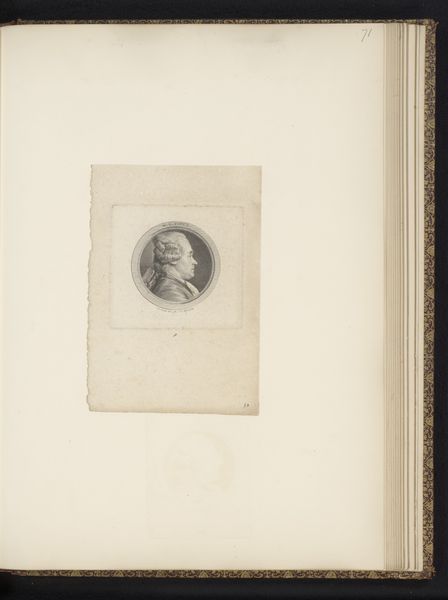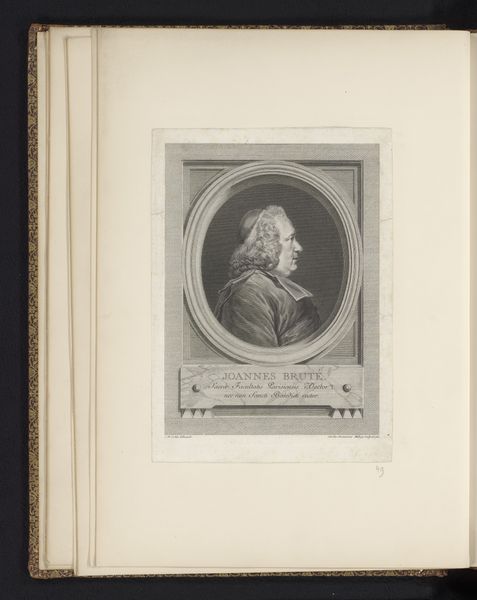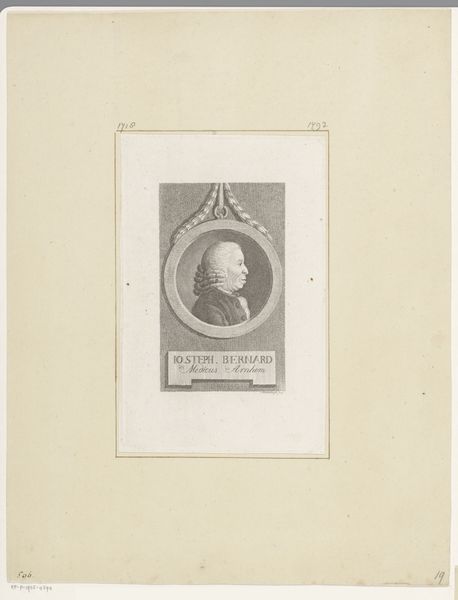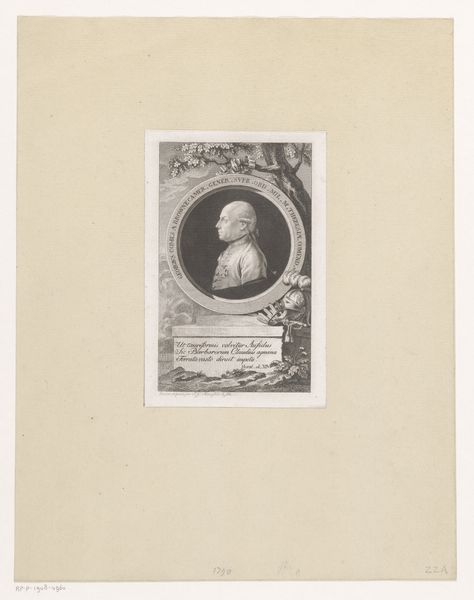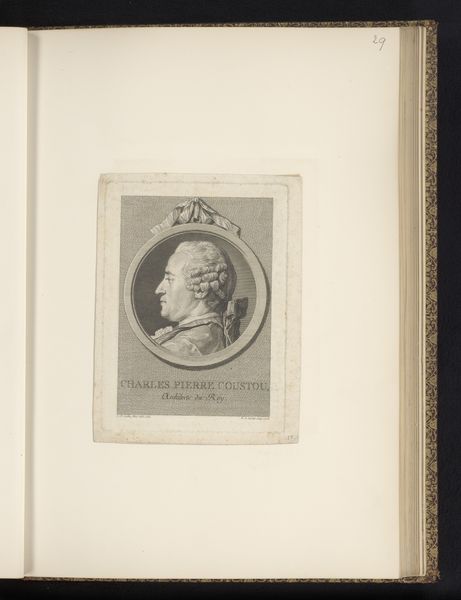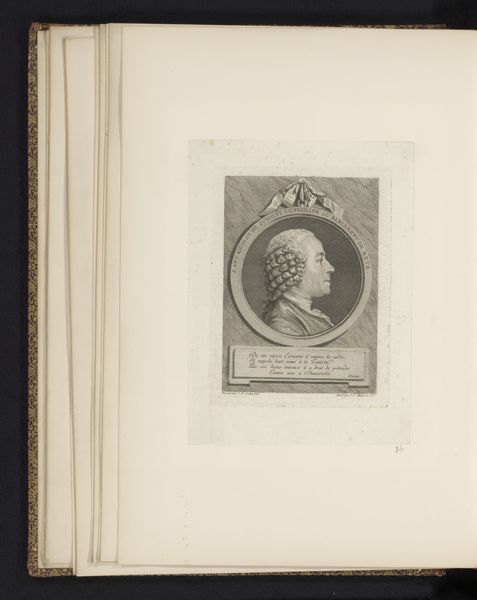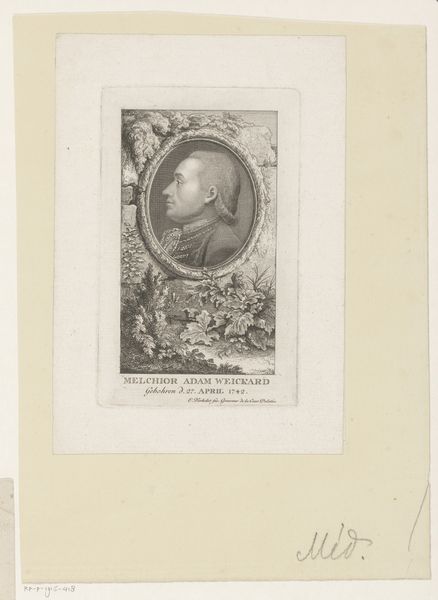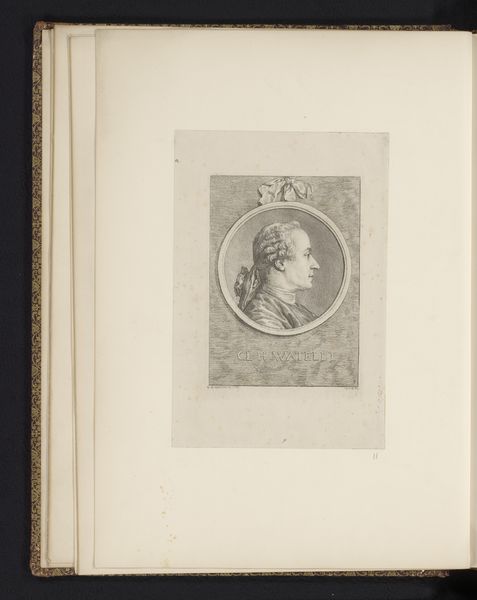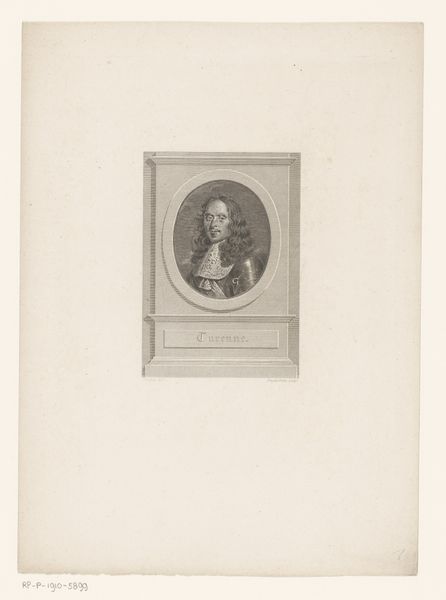
drawing, paper, engraving
#
portrait
#
drawing
#
neoclacissism
#
paper
#
engraving
Dimensions: height 185 mm, width 125 mm
Copyright: Rijks Museum: Open Domain
Curator: Here we have a rather dignified engraving dating from between 1770 and 1790, attributed to François Hubert. It's titled "Portret van Élie Catherine Fréron." Editor: The precision of the engraving lends this such a stark, almost severe quality. It makes me think about how such graphic depictions mediated understandings of personhood. Curator: Absolutely. And situated at the Rijksmuseum, the engraving gains additional weight, as it prompts considerations of Dutch involvement in broader European intellectual currents and Neoclassical artistic modes during the late 18th century. Élie Catherine Fréron, although French, certainly embodies those movements that cross boundaries. Editor: You're right to focus on the international exchange. Seeing the paper and the etching, it also underscores the significance of reproducible image technologies and its relationship to dissemination and consumption in this period. Do we know much about the labour of Francois Hubert in producing this? Curator: Biographical specifics about Hubert are limited, unfortunately. Yet this absence can actually become a focal point. Considering issues surrounding authorship and attribution enables us to interrogate larger art historical biases favoring named geniuses while obscuring more common laborers. And that also reflects on Freon herself; as a woman in a deeply patriarchal era, how did gender dictate what she could or couldn't say, produce or become. Editor: The framing is rather suggestive, literally an oval enclosure, one could suggest that it restricts Élie Catherine Freón while marking her as a symbol to be admired from afar. Curator: Exactly, portraits, in the form, always perform these dual roles; they capture and liberate, even simultaneously. Viewing the work becomes this act of critical interrogation on those historical, social frameworks Editor: Studying how materials circulated alongside these depictions reveals hidden circuits of knowledge. And that impacts on how we reflect on this portrait in our current era. Curator: A productive conclusion, focusing on historical techniques that can tell us just as much about that society as prominent figure's individual history. Editor: Agreed, recognizing labour involved reminds us about the myriad hands that shaped not just artworks, but the social landscapes reflected in those artworks, still relevant now.
Comments
No comments
Be the first to comment and join the conversation on the ultimate creative platform.


